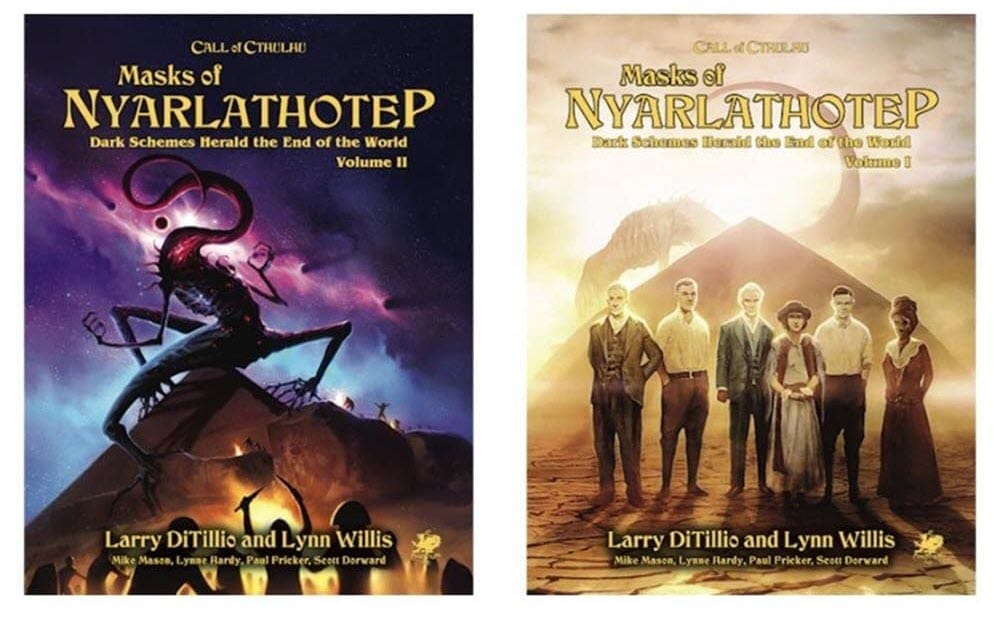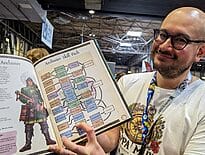In my last article, I talked myself into accepting that putting adventures in products wasn’t just a waste of page count. In doing so, I examined reading an adventure as a learning opportunity as much as something you are definitely going to run.
But I didn’t really go into how we can then use that information in order to judge if an adventure is for our group and where/how to change it if not. So let’s examine some of the ways we can process an adventure and prep it for a specific group.
Abandon Any Thoughts Of Canon
Before we begin, we must first accept one truth. If I run a game and you run the same adventure from the same sourcebook, we are actually still not telling the same story. My version of an adventure might feature the same NPC but they’ll react differently to players than mine will. Events that happen in my continuity will look different to yours. It’s one of the great things about roleplaying games.
Any famous fantasy story has a wonderful rich history and lore. But there’s maybe a million different versions of the Forgotten Realms or the World Of Darkness over the generations, where different things happened, different stories were told. Embrace that. Make this story work for you and your group. Jettison things that don’t fit. Which brings us to…
Narrative
The first thing we’re doing while reading an adventure is exploring the narrative. This is the only time we are going to be experiencing the story like an adventurer will – for the first time – which means that we need to be hyper aware of how each story beat connects to the next. Some games, like Call Of Cthulhu or Feng Shui are really good about signposting exactly how the ‘connective tissue’ of each part of adventure is supposed to fit and where one thing can lead to multiple other things.

A good sign is if you never have to go back and re-read to work out why players would be at a place or doing a thing. If you end up having to do re-read, you need to either clarify this for yourself so you can deliver the narrative flow, or you need to start thinking about adding stuff to make the transition more obvious.
For example, the solving of part of a mystery in Storm King’s Thunder relies on players remembering a coin they find matches one in a village they may have travelled through during an open section where they are wandering a sandbox. Not only is this a thing the players can miss if they travel in another direction, it isn’t exactly heavily signposted during the original wandering section. So a GM could just leave that section out if they aren’t careful and then screw up the whole campaign.
Imagineering
The second thing we can do while we are playing is imagine the adventure. Not just as a story but as a game table.
While the adventure unfolds, sometimes I am taking a group of proxy characters through the scene in my head, thinking about how those (often quite generic) characters might approach this. Sometimes I’m thinking about how the scene then might play out, a sort of ‘I see how it’s written, but how would I run this?’ and think about what I like about it, how different players I know might respond. Like I know that if there’s a cute animal in a scene, one group I have is going to try to adopt it. Or that one player really likes interesting NPC interaction while another likes action. I’ll often read an adventure and think ‘[X] person would love this bit’. Or ‘This mechanic is inventive and [Y] will find this enjoyable’.
This instinct is one of the best skills you should develop because it steps beyond looking at the adventure in a vacuum into practically applying it to your group. The game is always at its best when it is a synergy of ideas. While that’s often the bit where your ideas meld with the players, there’s a moment before that where you are melding the author’s idea with your own. This process is a sort of playing of the game too. A good adventure will give you room to improvise and understand that it’s trying to give you the idea the author had but give you room to create inside that structure.
It also means you can also identify places your group might have trouble. Check if new mechanics are too off or might confuse players. See if they require a lot of very quick on the spot learning. Should you prepare a handout?
The Splice

During the imagineering stage, we’re also thinking about things we can bring it from other adventures or sources. Perhaps you read the Masks of Nyarlathotep and while you’re reading it you can see that the players visit a location that is featured in Harlem Unbound and you really enjoy a one-shot in that book and wonder how to link it in. Perhaps you read Burning Dragon and think ‘that’s cool, but this NPC I liked in the last adventure should be there instead of this boring one’. This is the moment you get to think about content in a really specific way and cut and add and change or how you link the story to the universe you already made, bringing things in players know from your lore, make it your own.
I often do this as I am doing the imagineering but I’m aware that might because I neurodivergently overprocess this stuff. So feel free to take time after you read through an adventure to go back over the bigger beats and thing about how it can be chopped and changed to suit the story you want to tell and any side parts you want to add. Also clarity sidenote: there are actually no boring NPCs in Burning Dragon. It is arguably one of the best shortform RPG adventures ever written.

If an adventure is short form, we’re also looking at how seamlessly we can drag and drop. How much do players have to know before they begin? Do I have to set this thing up ahead of time by alluding to it in a previous adventure? Will the fallout of what happens in it be a local event or will it totally knock over my game world? It worth thinking about.
Back in the day, there were several World Of Darkness or Legend Of The Five Rings supplements that fundamentally changed the way a game would function going forward, so it was worth making sure if you played those adventures, you were ready to never go back. You need to gauge that impact and what the aftermath looks like. If the adventure’s end is the campaign’s end, that’s less of a problem but still, if you want to continue the same world at some point, you need to be thinking about the endgame when it happens.
Take time to think about how to hook players into this story, how they might disengage and the places they might suddenly turn away from the published material. This gives you an idea of where you’ll need to improvise.
Hopefully this look at what we are doing when we read through adventures allows you to digest them for you home games in a more thorough and rewarding fashion. Next time, we’re going to look at what we do when we judge an adventure isn’t going to fit our needs.


